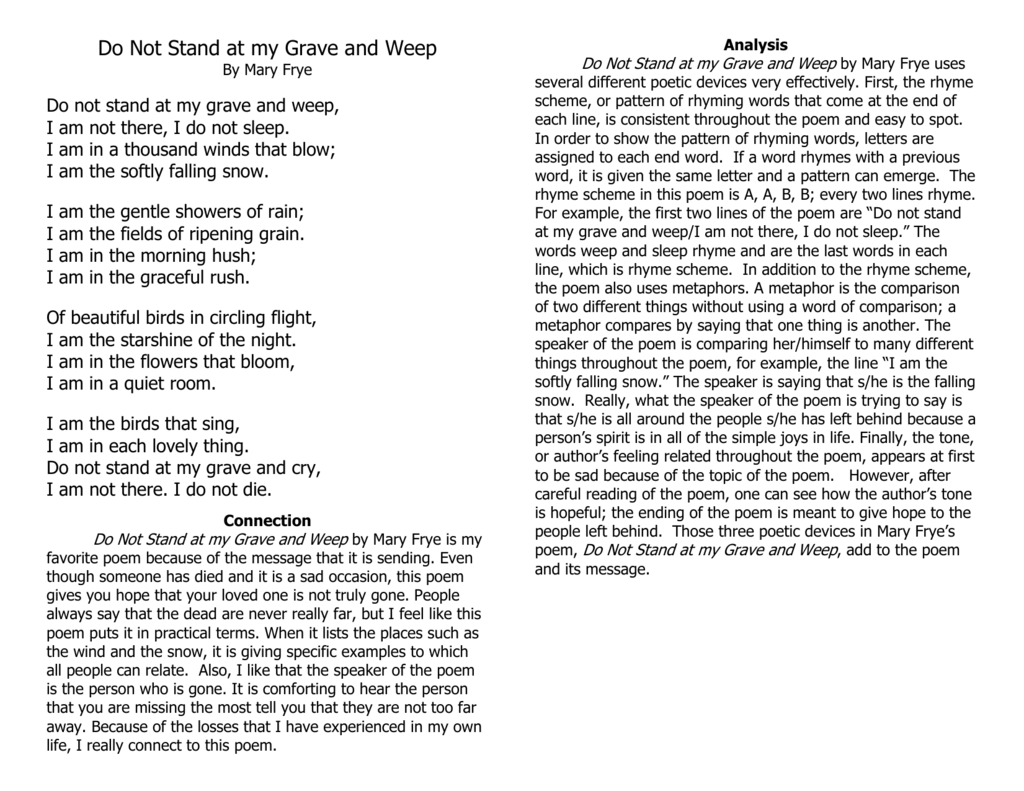

Margaret’s mother was ill but she was unable to return to Germany to visit her due to the growing unrest at the time and following her death Margaret was devastated that she never had the chance to “stand by my mother’s grave and shed a tear”. Written in 1932 in response to the heartbreak of Margaret Schwarzkopf, a German Jew staying with Mary in Baltimore, USA. Do not stand at my grave and weep I am not there, I do not sleep. I am in the morning hush, of Stranglethorns jungle, green and lush. I am the gentle showers of rain, on Westfalls fields of golden grain.

I am in a thousand winds that blow, across Northrends bright and shining snow.

When you awaken in the morning's hush I am the swift uplifting rush Of quiet birds in circled flight. I am a thousand winds that blow, I am the diamond glints on snow, I am the sun on ripened grain, I am the gentle autumn rain. These papers were written primarily by students and provide critical analysis of 'Do Not Stand at My Grave and Weep' and Other Poems by Mary Elizabeth Frye. Although the origin of the poem was disputed until later in her life, Mary Fryes authorship was confirmed in 1998 after research by Abigail Van Buren, a newspaper columnist. Do not stand at my grave and weep I am not there I do not sleep. 'Do Not Stand at My Grave and Weep' and Other Poems essays are academic essays for citation. This is a setting of Mary Elizabeth Frye’s only accredited poem of the same name. Do not stand at my grave and weep, I am not there, I do not sleep. ' Do Not Stand at My Grave and Weep ' is a poem written in 1932 by Mary Elizabeth Frye. Soprano Solo (from within choir) and SSAA (some divisi) ALSO Soprano Solo (from within choir) and SATB


 0 kommentar(er)
0 kommentar(er)
